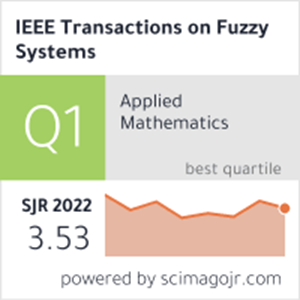Asynchronously Switched Control With Variable Convergence Rate for Switched Nonlinear Systems: A Persistent Dwell-Time Scheme
IF 11.9
1区 计算机科学
Q1 COMPUTER SCIENCE, ARTIFICIAL INTELLIGENCE
引用次数: 0
Abstract
This article explores the针对切换式非线性系统的收敛速率可变的异步切换控制:持久停留时间方案
研究了两种类型的异步切换非线性切换系统在收敛速率约束下的$H_{\infty }$控制问题。首先,本文研究了切换非线性系统的变收敛速率控制问题。结合广义极点放置思想和Takagi-Sugeno模糊技术,提出了一种新颖的$H_{\infty }$控制准则,特别关注收敛速度约束。此外,采用持久驻留时间切换对切换系统中的两种异步场景进行建模:延时切换和不匹配切换,其中允许最大异步延迟超过子系统驻留时间。根据这一新准则,针对具有异步特性的切换非线性系统设计了一种新型$H_{\infty }$模糊控制器。它既能保证目标闭环系统的渐近稳定,又能精确调节系统状态的收敛速度,同时还具有一定的抗干扰能力。最后,通过数值仿真和隧道二极管电路系统控制实例验证了本文方法的有效性。
本文章由计算机程序翻译,如有差异,请以英文原文为准。
求助全文
约1分钟内获得全文
求助全文
来源期刊

IEEE Transactions on Fuzzy Systems
工程技术-工程:电子与电气
CiteScore
20.50
自引率
13.40%
发文量
517
审稿时长
3.0 months
期刊介绍:
The IEEE Transactions on Fuzzy Systems is a scholarly journal that focuses on the theory, design, and application of fuzzy systems. It aims to publish high-quality technical papers that contribute significant technical knowledge and exploratory developments in the field of fuzzy systems. The journal particularly emphasizes engineering systems and scientific applications. In addition to research articles, the Transactions also includes a letters section featuring current information, comments, and rebuttals related to published papers.
 求助内容:
求助内容: 应助结果提醒方式:
应助结果提醒方式:


